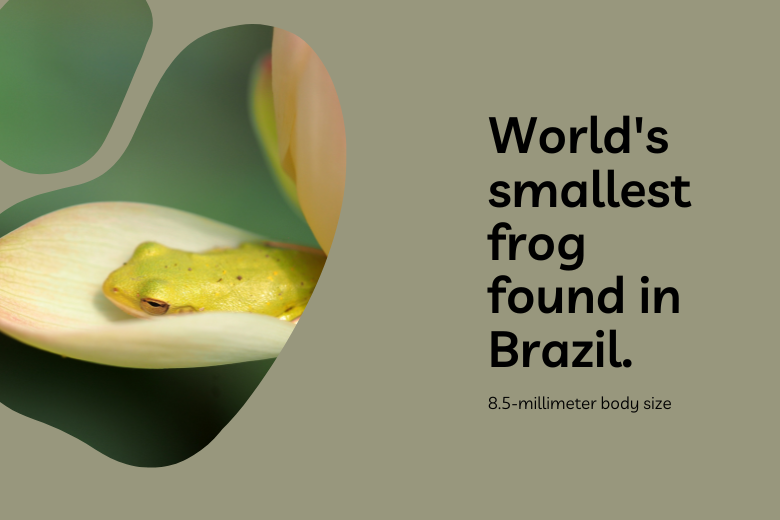Brazilian researchers have uncovered a potential record-breaker in the realm of amphibians, identifying a new candidate for the world’s smallest frog and the tiniest vertebrate known. The adult male frog, hailing from the Brachycephalus genus and inhabiting Brazil’s Atlantic rainforest region, boasts a mere 8.5-millimeter body size.
Discovery Insights:
Herpetologist Mirco Sole and the research team from Universidade Estadual de Santa Cruz in Brazil made this remarkable find while studying 46 adults from the Brachycephalus family. Among these specimens, the smallest male measured a mere 6.5 mm from snout to rump, while females averaged slightly longer at an 8 mm body size.
This discovery surpasses the previous record-holder, Papua New Guinea’s Paedophryne amauensis, a microhylid frog from the Psychrophrynella genus, where males averaged around 8 mm nose to tail. The Brachycephalus genus comprises multiple species occupying Brazil’s southern coastal states.
Morphological Adaptations:
Notably, this ultra-small frog exhibits unconventional bodily features compared to typical amphibians. Principal investigator Sole revealed that it has only two toes on each foot, a departure from the five toes found in 97% of frog species worldwide.
Previous observations of tiny Brachycephalus frogs revealed shape-changing ear structures affecting hearing and movement. While this latest species appears to excel in jumping compared to its counterparts, its inner ear anatomy is yet to be scrutinized.
Possibility of Further Miniature Discoveries: Researchers highlight the vast unexplored habitats in remote tropical zones globally, suggesting the potential for even smaller amphibians with unique adaptations to thrive at scales under 5 millimeters in body length.
However, species under 6 mm may pose significant challenges in terms of organ development, life stage durations, and physical dynamics. Despite these potential hurdles, scientist Sole remains open-minded, anticipating that future explorations may unveil even more diminutive species.
Significance of Tiny Species:
Exploring extremophiles at the lower limits of observability pushes the boundaries of vertebrate existence and reveals insights into the evolutionary constraints of dwarfism pathways. From a conservation perspective, these micro-endemics have survived in delicately balanced ecosystems sensitive to disturbances. Therefore, safeguarding the habitats of such relic species is crucial for preserving ecological balance and enhancing overall regional biodiversity richness.
The revelation of the world’s smallest frog within Brazil’s Atlantic Forests underscores the ongoing need for increased exploration in global biodiversity hotspots, which continue to yield extraordinary biological marvels. Protecting these rare endemic species holds the promise of cascading conservation benefits.







Leave a Reply